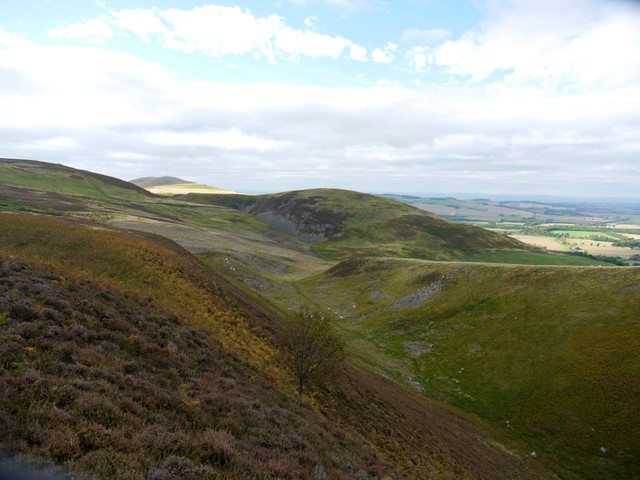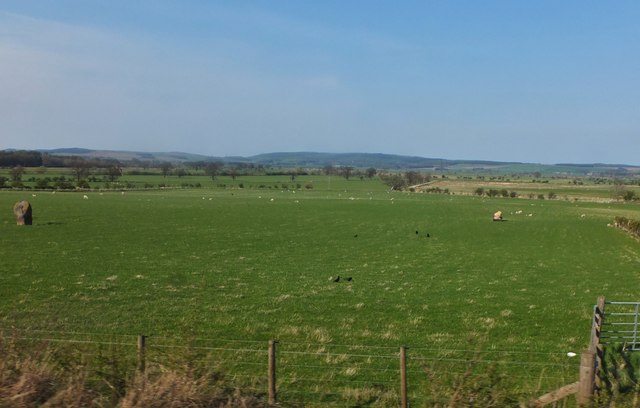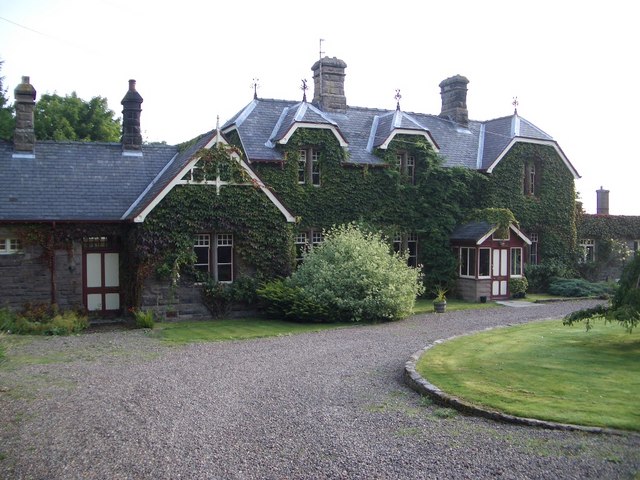Topics > Northumberland > Akeld > Battle of Homildon Hill, 1402
Battle of Homildon Hill, 1402
In August 1402 a large Scottish force of around 10,000 men led by Archibald, Earl of Douglas, invaded England, going as far as Newcastle. The Scots' way home, however, was blocked by an English force led by the Earl of Northumberland and his son Henry Percy. Douglas took up position on the slopes of Humbleton Hill (then known as Homildon Hill) near Akeld in Northumberland, but suffered heavy losses after being fired on by English longbowmen.
The Battle of Homildon Hill was a conflict between English and Scottish armies on 14 September 1402 in Northumberland, England. The battle was recounted in Shakespeare’s Henry IV, part 1. Although Humbleton Hill is the modern name of the site, over the centuries it has been variously named Homildon, Hameldun, Holmedon, and Homilheugh.
Background
During the time leading to the repudiation of the Truce of Leulinghem, both Kingdoms began to raid the other. On 22 June 1402, a small force backed by the Scots government, returning from one such raid, was beaten by George Dunbar, the Earl of March's son, at the Battle of Nesbit Moor, at which no quarter was given.
Archibald Douglas, 4th Earl of Douglas, arguably the most militarily powerful man in Scotland, and a key part of the Duke of Albany's administration, used the pretext of Nisbet Muir to lead a punitive expedition into England. With Murdoch of Fife, Albany's son, Douglas's army marched as far as Newcastle to avenge the battle. At the head of 10,000 men, he laid waste to the whole of Northumberland.
Battle
March persuaded Henry Percy, 1st Earl of Northumberland, and his son Harry "Hotspur" to lie in wait for the returning Scots at Wooler. Once Douglas's men had made camp at Millfield, relatively low ground, the English army rushed to attack. The Scots did however have keen sentries and the army was able to retreat to the higher ground of Homildon hill, and organised into traditional Schiltron formations. Douglas had not learnt the lessons that had defeated his great uncle at the Battle of Halidon Hill seventy years previously. The Schiltrons presented a large target for the English Longbowmen, and the formations started to break. A hundred men, under Sir John Swinton of the Swintons of that Ilk, chose to charge the enemy saying: "Better to die in the mellay than be shot down like deer". All perished. It has been suggested that Douglas hesitated to signal the advance of his main force, and when he did, it was too little too late. Douglas's mauled army met the as yet unbloodied English men at arms, and were routed. Many of Douglas's leading captains were captured, including his kinsman George Douglas, 1st Earl of Angus, Thomas Dunbar, 5th Earl of Moray and Murdoch of Fife. Douglas himself was captured having been wounded five times, including the loss of an eye. This wounding was despite the fact that it is alleged Douglas' armour had taken three years in its construction.
Aftermath
With so many of the Scots leaders and chivalry taken prisoner, Albany was left in a precarious position militarily if not politically. It was only due to King Henry's internal and Welsh problems that the English did not press home their victory with a full-scale invasion of Scotland.
Henry IV was keen that so many able soldiers should not return to Scotland to fight against him, so refused to allow those who held noble captives to ransom them.
This act became one of the many grievances that the Percys had with the Crown. In 1403 they allied themselves with Owain Glyndŵr, and went into open rebellion against the English king. Hotspur set his prisoners free, as there was by now no chance of remuneration for them, and many including Douglas decided to join forces with him. Indeed, Douglas fought, and was again heavily wounded, at Hotspur's final fight at the Battle of Shrewsbury.
As recounted by Shakespeare
Here is a dear, a true industrious friend,
Sir Walter Blunt, new lighted from his horse.
Stain’d with the variation of each soil
Betwixt that Holmedon and this seat of ours;
And he hath brought us smooth and welcome news.
The Earl of Douglas is discomfited:
Ten thousand bold Scots, two and twenty knights,
Balk’d in their own blood did Sir Walter see
On Holmedon’s plains. Of prisoners, Hotspur took
Mordake the Earl of Fife, and eldest son
To beaten Douglas; and the Earl of Athol,
Of Murray, Angus, and Menteith:
And is not this an honourable spoil?
A gallant prize? ha, cousin, is it not?
---Shakespeare, Henry IV, part 1, act 1, scene 1.
Notable casualties
- Sir Adam de Gordon, Scottish Captain, killed in action.
- Sir John Swinton, 14th of that Ilk, Scottish Captain, killed in action.
- Sir John Livingstone of Callendar
- Sir Alexander Ramsay of Dalhousie
Notable captives
- Archibald Douglas, 4th Earl of Douglas
- Murdoch Stewart, Earl of Fife
- Thomas Dunbar, 5th Earl of Moray
- George Douglas, 1st Earl of Angus
- Henry Sinclair, 2nd Earl of Orkney
Battle site
The site of the battle is now located within the Northumberland National Park. The hill contains the remains of an Iron Age hillfort at the summit, built some 1500 years before the battle. During the medieval period the sides of the ruined fort were apparently used for summer settlements and sheep shelters.
The Battle Stone at was traditionally thought to commemorate the 1402 battle, but is actually a standing stone dating to the Bronze Age.
Visit the page: Battle of Homildon Hill for references and further details. You can contribute to this article on Wikipedia.

from https://historicengland.org.u…
Battle of Homildon Hill 1402
- "In August 1402 a large Scottish force under Archibald, Earl of Douglas, invaded England, penetrated as far as Newcastle, and carried off a great deal of booty. The Scots' way …
Added by
Simon Cotterill

from https://content.historicengla…
English Heritage Battlefield Report: Homildon Hill 1402
- "...The Battle of Homildon Hill took place between one and two miles west of Wooler in Northumberland.
Homildon Hill, now called Humbleton Hill, is a foothill of the Cheviots and …
Added by
Simon Cotterill
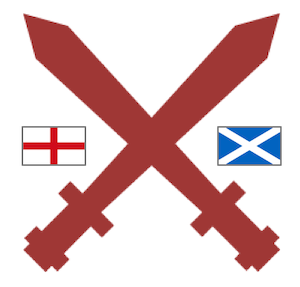
Co-Curate Page
Anglo-Scottish Wars
- This is not an exhaustive list! Can you contribute to the Visual Timeline? 937 Battle of Brunanburh 1018 Battle of Carham 1093 Battle of Alnwick 1174 …
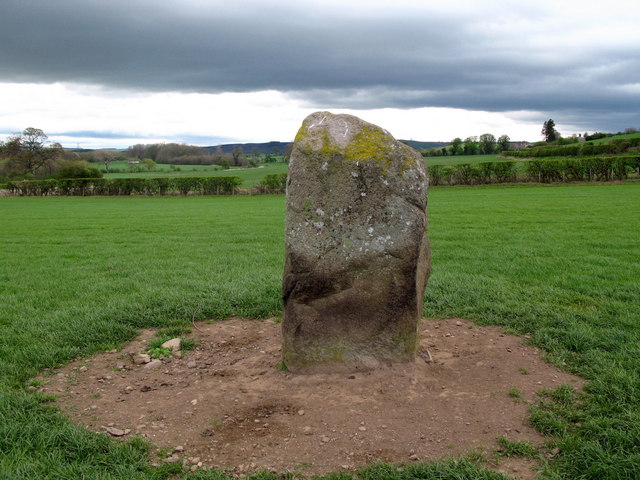
Co-Curate Page
Bendor
- Overview Map Street View Bendor is a Hamlet in Northumberland between Akeld and Wooler. The site of the Battle of Homildon Hill in 1402 is marked by a standing stone in …

Co-Curate Page
Humbleton
- Overview Map Street View Humbleton is a small hamlet below Humbleton hill, located between Akeld and Wooler in Northumberland.


from https://historicengland.org.u…
Battle of Homildon Hill 1402
- "In August 1402 a large Scottish force under Archibald, Earl of Douglas, invaded England, penetrated as far as Newcastle, and carried off a great deal of booty. The Scots' way …
Added by
Simon Cotterill

from https://content.historicengla…
English Heritage Battlefield Report: Homildon Hill 1402
- "...The Battle of Homildon Hill took place between one and two miles west of Wooler in Northumberland.
Homildon Hill, now called Humbleton Hill, is a foothill of the Cheviots and …
Added by
Simon Cotterill

Co-Curate Page
Anglo-Scottish Wars
- This is not an exhaustive list! Can you contribute to the Visual Timeline? 937 Battle of Brunanburh 1018 Battle of Carham 1093 Battle of Alnwick 1174 …

Co-Curate Page
Bendor
- Overview Map Street View Bendor is a Hamlet in Northumberland between Akeld and Wooler. The site of the Battle of Homildon Hill in 1402 is marked by a standing stone in …


